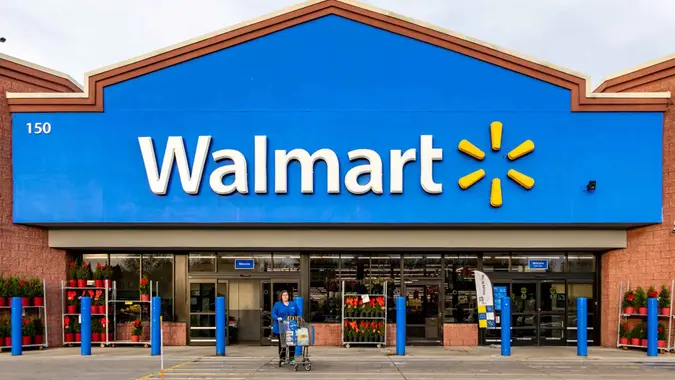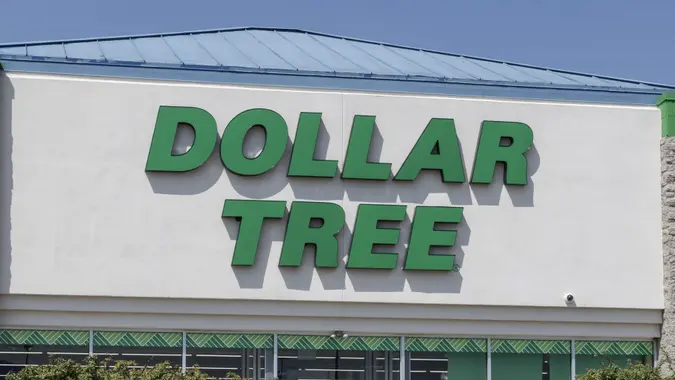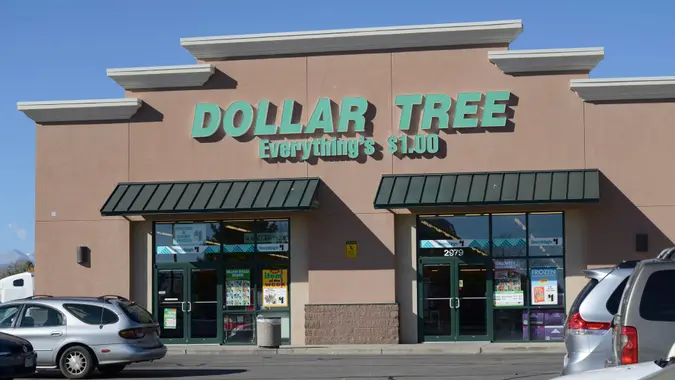The 12 Dollar Tree? How Much the Store Could Be Charging by 2030

Commitment to Our Readers
GOBankingRates' editorial team is committed to bringing you unbiased reviews and information. We use data-driven methodologies to evaluate financial products and services - our reviews and ratings are not influenced by advertisers. You can read more about our editorial guidelines and our products and services review methodology.

20 Years
Helping You Live Richer

Reviewed
by Experts

Trusted by
Millions of Readers
Shoppers may have to inevitably accept the “dollar” in Dollar Tree’s brand name becoming silent in the near future.
Over the past few years, the discount retailer has been gradually raising its base prices. In 2021, prices were raised to $1.25. In March 2024, Dollar Tree CEO Rick Dreiling said price points would range from $1.50 to $7 as over 300 items expand the company’s multi-price assortment.
The sudden introduction of Dollar Tree’s significantly higher price cap may cause consumers to wonder how much more money they’ll spend at Dollar Tree, or at any other dollar store.
Realistically, how much more could dollar store prices increase?
What Dollar Store Prices Could Look Like in 2030
Michael Collins, CFA and CEO of WinCap Financial, said that if dollar store prices continue to increase at a similar rate, there’s great potential that consumers will be spending significantly more money by 2030.
“If prices continue to increase by $2 every few years, the top price at dollar stores could reach $12 by 2030,” Collins said. “This would represent a significant increase from the current $1 or $1.50 pricing and would result in consumers spending much more for products at these stores.”
Key Factors That Could Lead to Higher Dollar Store Prices
Collins said three factors may contribute to dollar stores experiencing potential price increases.
The first factor, inflation, causes the cost of goods and services to rise over time. As the cost of production and transportation increases, Collins said retailers may need to pass those costs onto consumers through higher prices.
Competition is the second factor. Solomon Partners, an investment advisory firm that counsels clients on mergers, acquisitions and business strategy, provided GOBankingRates with statistics on the dollar grocer background. Within today’s top 15 U.S. grocers, supermarkets make up just five slots. The 10 other slots belong to national/discount grocers such as Dollar Tree, Family Dollar and Dollar General.
“As more retailers enter the discount market and compete for customers, it may become more difficult for dollar stores to maintain their low prices,” Collins said.
The final factor Collins recommends watching out for is changes in trade policies and international tariffs that can impact the cost of goods sold at dollar stores.
“If tariffs are imposed on imported goods from countries such as China, where many dollar store products are sourced,” he said, “it could result in higher costs for these items and ultimately lead to higher prices at the retail level.”
The Future of Dollar Stores
The future’s still bright for dollar stores, with or without $1 offerings.
Scott Moses, head of the grocery, pharmacy and restaurants group at Solomon Partners, said Dollar General and Family Dollar/Dollar Tree are two of the fastest-growing grocers in the United States. Together, their footprint comprises over 36,000 stores and roughly $50 billion in U.S. grocery sales.
In January, Dollar General announced it had surpassed a milestone of 5,000 nationwide stores that offer fresh produce. This is more individual points of produce distribution than any other U.S. mass retailer or grocer. The customer base is also growing, with The Wall Street Journal reporting in June 2023 that more six-figure income earners are shopping at dollar stores.
Does that mean dollar stores are a lock for $12+ offerings? Not yet, though Collins said if current trends continue consumers should expect some degree of a price increase at these stores.
 Written by
Written by  Edited by
Edited by 
























